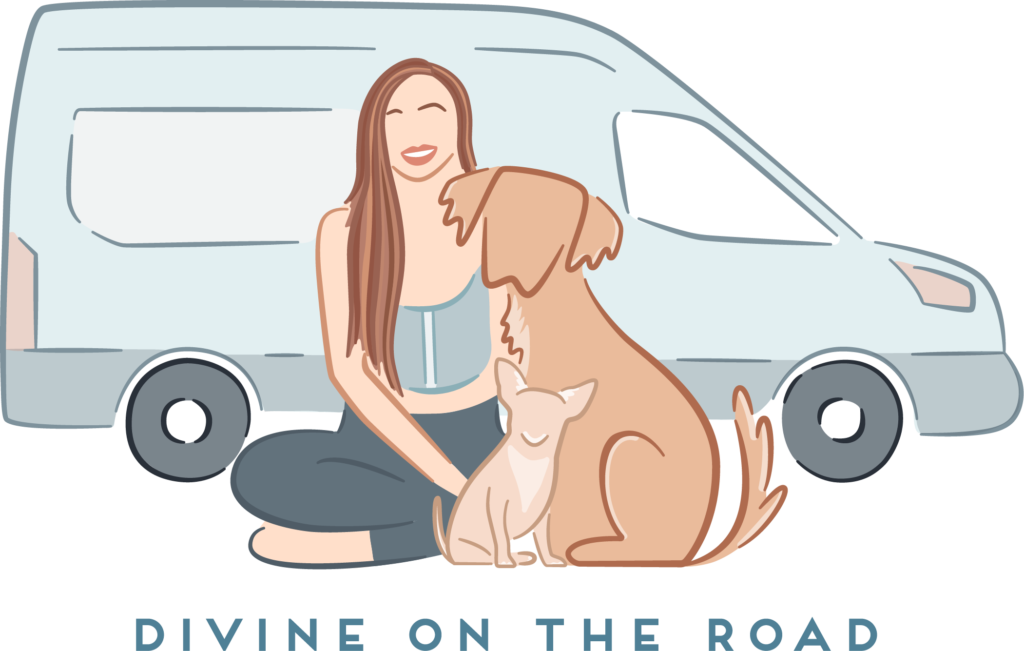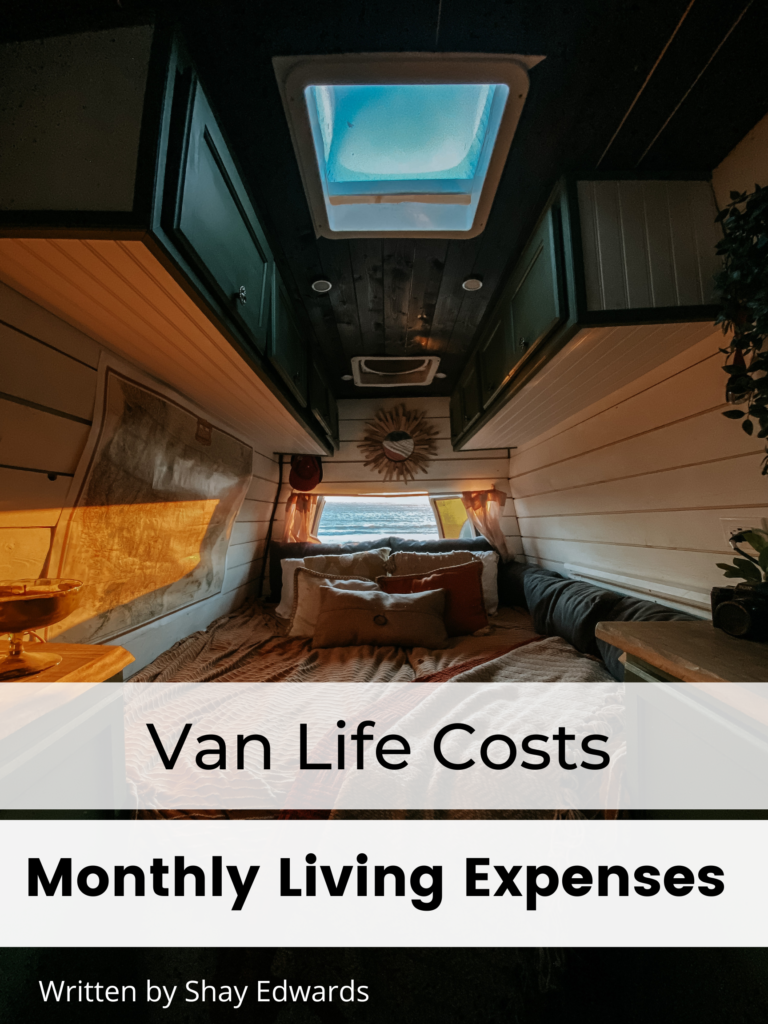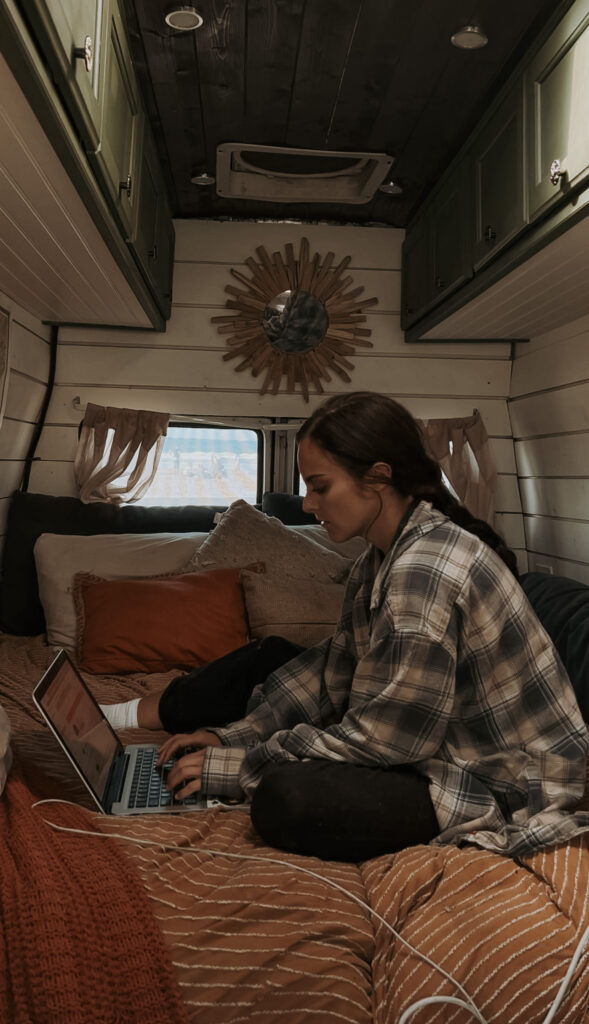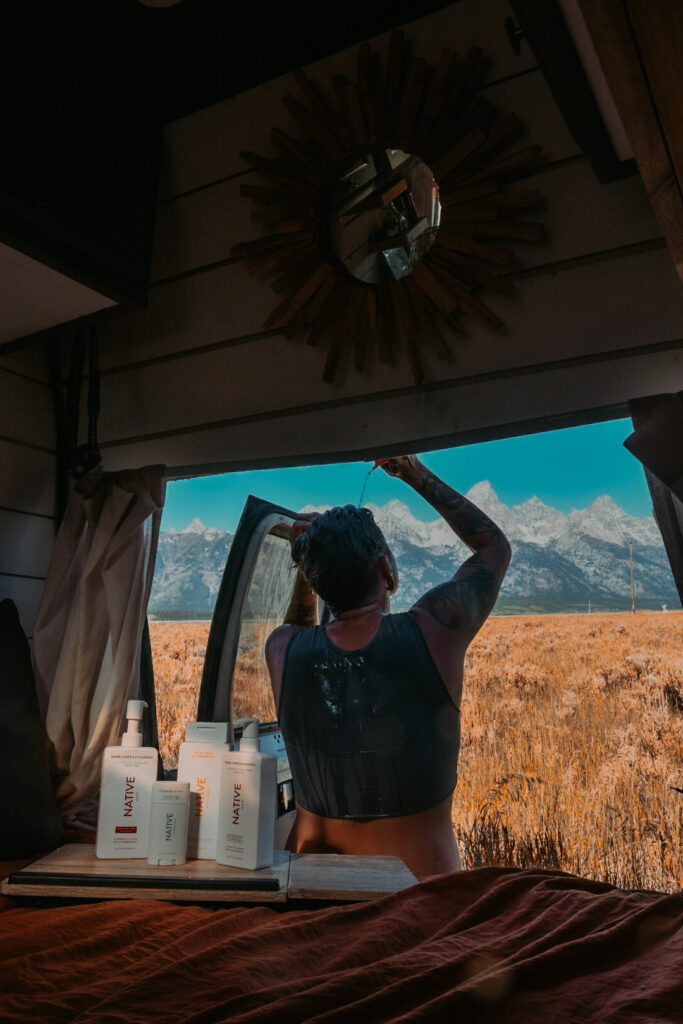When I was first researching how much money I would need to save to start Van Life, all I looked up was how much the actual van conversion project would take. As someone who recently quit their full-time job and was living off savings, this was obviously a very important aspect for me. Now, two years later, I realized I never really looked into just how much I should expect to pay in “living expenses” each month. Of course, I no longer have automatic bills like rent and utilities, but I do have gas payments, wifi payments, and many other things that I never really thought about when I transitioned from a traditional 9-5 in an apartment to full-time remote work in a van.
As with most lifestyles, this varies greatly from person to person, but below are my top expenses each month to give you a better idea of how to plan out your budget for your own life on the road:
GAS
The best part of life on the road is the ability to completely say goodbye to paying rent or a mortgage. I remember absolutely dreading looking at my checking account after the 1st of every month when we lived in an apartment in a popular city. Of course, one of the big perks everyone always says about van life is how you avoid that feeling, which is absolutely true, but gas money becomes your new “rent”. The good news? You can control how much you drive each month.
On months that my partner and I travel around faster, typically in the spring and fall when the weather is nice in a larger amount of places, we spend roughly $800-$1,300 a month in fuel. Crazy right? However, on months where we hang around in one spot for 2+ weeks, or hunker down in a warm city during winter, our gas payments can get as low as $400! Your “new gas rent” is now completely up to you, which is one of our favorite perks.
Heat
We’re gonna call this section utilities. Just like in a traditional house, you have to worry about keeping your home on wheels at a comfortable temperature to live in full or part time. You have a few options here: have a propane or diesel heater, which is going to raise your monthly spending about $50-$200+ depending on how cold the temperatures are where you are, also adding in the price of things like a Chinese Diesel Heater or a Mr.Buddy.
You can also choose to travel with the temperatures (this what I do!) to avoid having to overly heat or cool your van. We aim to always be in temperatures around 60-80 degrees F to save on these costs, meaning we drive North to places like Washington, Idaho, Montana, and Wyoming in the hot summer months and spend our winters in Arizona, Southern California, and even Baja, Mexico!
Wifi
Whether you work remote like me, or you simply want internet when you’re living in your van to watch Netflix, getting a form of wifi is usually a top priority for life on the road. There are a few options for this and I have tried many forms in my last two years in my van so I have a good idea of the pros and cons of each!
Your first option is to add a hotspot to your current phone plan. This will allow you to essentially share the service you get from your phone to things like laptops, ipads, etc. These plans range from $20-$50 a month added to your current cell phone service provider. I have this for emergencies, but even at the unlimited plan I find myself running out of high-speed internet quickly if I use this every single day, which can put you in a tricky situation if you’re off-grid camping and need to work!
You can also get an external hotspot from a different cell phone service provider than your phone is on. With these, you have to buy the initial device and then set up a monthly plan which vary in price. The biggest luxury of this option is you get to be connected to a whole other range of service that your current phone plan may not reach! For example, a lot of people with ATT will get a Verizon external hotspot.
Another option, and what I currently have, is something called Starlink. This satellite based high-speed internet option is fairly new and has been taking over the RV world, as it’s allowed people who rely on internet to be able to go more “off-grid” to places where there is zero cell service, because the wifi runs solely off satellites in space. Priced the highest at about $600 for the device and $135/month for the service, this is definitely more popular for people who work remote and need high-speed internet pretty regularly. Although, a great perk of this option is the ability to pause the service for months at a time if you won’t be using it.
Food/Groceries
As with most of these categories, food and grocery bills really vary person to person. For me, I live in a van with my partner and our 2 cats AND we are vegan. Obviously, our grocery bill is going to be a lot more than a solo vanlifer with no pets who doesn’t shop plant-based.
Roughly, we spend about $600-800 a month for groceries, but split between two people we find this about the same as we spent before the van. We also spend around $200 going out to eat/for drinks each month, specifically when exploring new towns and cities. If we are off-grid in the desert, our go-out-to-eat budget tends to be much lower. My biggest tip for grocery and food budgets is to account for the more touristy the area, the higher your bill will be. Plan ahead!
Camping/Parking
For many people doing van life full-time, paying for campsites is more of a treat we do every once in awhile. In the last year on the road, I think we paid for a campspot maybe 4 times total. In our experience, paid campgrounds cost anywhere between $5-$50, depending on whether or not you want an electric and water hook-up. We tend to go this route if we hit a week of gloomy weather and need to charge up our batteries using shore power!
Typically, our monthly camping cost is $0 because we use public land or we stealth camp in cities/towns, both of which we find on the app iOverlander. This is completely up to each individual person, but free is for me!
Insurance
Unfortunately, living on the road in a specialty vehicle doesn’t get you out of car insurance, if anything you will end up with a larger bill. There are tons of options for car insurance in the United States that will insure a van so I recommend you do your research, but I personally go with Liberty Mutual and pay about $400 every six months. This also insures my build and belongings (laptop, cameras, etc) so I’ve been really happy with this option!
Showers
To think of showering as a monthly expense seems a bit strange, but just think of it as your water bill! Most vanlifers and nomads I know use gym memberships as ways to not only get some excercise in, but also shower in different cities and towns across the country. The two most popular are Planet Fitness and Anytime Fitness, ranging from $20-40/per month.
You can also rely on truck and rest stops for showers, but they can cost as high as $13 PER shower, so I definitely recommend using this method as a back-up option to save your wallet.
Another option is to include a shower in your build, whether that be a solar shower or a built-in shower. As with the other options, these vary in price and ease of use. For example, you can’t use an outdoor shower in the middle of a busy city street. The choice is completely yours here!
Fresh Water
Similarly to showers, I like to think of the cost of filling up my 14 gallons of fresh water as my “water bill”. There are water fill up stations in tons of different places, whether its dump stations, grocery stores, gas stations, etc, I find them all on iOverlander and they range in price. Sometimes it’s free and sometimes you get charged $10 to use a water station, it completely depends! On average, I spend less than $20 each month on my drinking and dish water.
In Summary..
As I mentioned a few times, how much you spend each month in a van largely varies on multiple different things so no month will look exactly the same for two different people. You may also have expenses like health insurance, Netflix, Spotify, Harvest Host, van maintenance, etc!
In my experience, however, these are some of the most common costs of van life each month, whether your total is more or less than these listed above it’s good to keep in mind some of the things that typically come up each month when planning your life on a road!

Shay Edwards
Author





